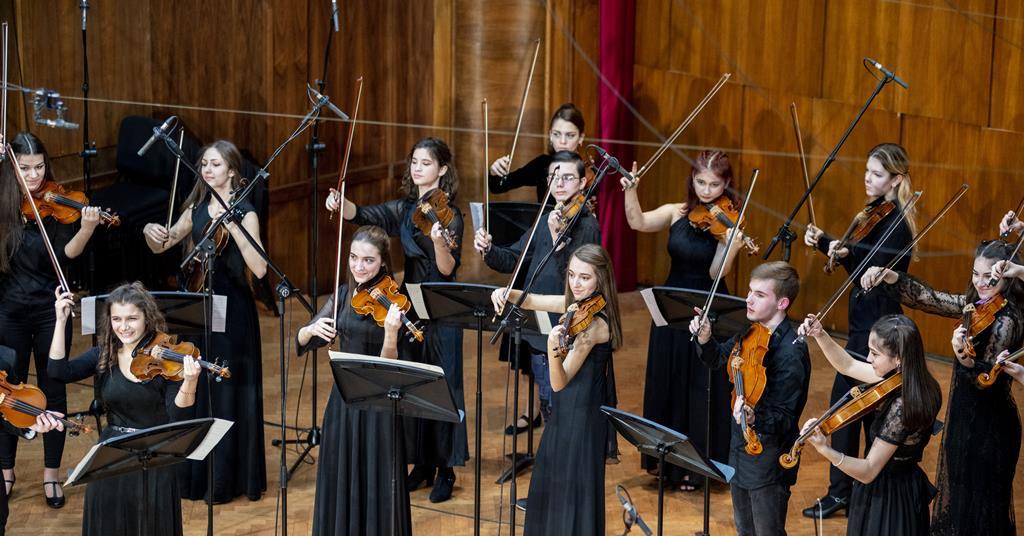The exact origins of the Serbian string school are difficult to determine, but what is clear is that in recent years there have been an increasing number of Serbian soloists and orchestral musicians occupying leading positions around the world.
I was interested to find out about what was happening musically in Serbia after meeting concert violist Saša Mirković. With his wife, cellist Tatjana Jovanović Mirković, he founded Belgrade-based string group Ensemble Metamorphosis and is their current leader. Mirković is a flamboyant personality with an overflowing sense of creativity – a refreshingly honest free-thinker. Investigating a little further, I discovered that the music world is populated by many more Serbian musicians just like him. ‘Throughout the 20th century, every generation of Serbs had their war, and that might have contributed to making us good artists,’ says Mirković. ‘We have all these difficulties in our lives and we make music out of it.’ Jovanović Mirković adds: ‘I think that our temperament and our individuality are the main reasons we exist now as people as well as artists.’
Apart from this attitude and a certain open-mindedness, there are two other reasons that might explain the making of so many good Serbian string players. First, as neither part of the East nor part of the West during the 20th century, the country was free to pick and choose what was best musically. Second, the music system in general in Serbia, and in particular one music boarding school in the small town of Ćuprija, has played an important role in nurturing Serbian talent.
Serbs share a similar outlook with other Balkan nations, but having been under Ottoman rule until the middle of the 19th century, they come from a very different place, culturally. ‘The difference between being part of the Ottoman or the Austrian empire is enormous, and because of that, we were very much behind in all aspects of Western cultural life,’ says Gordan Nikolić, former leader of the London Symphony Orchestra and musical director of the Netherlands Chamber Orchestra since 2004. ‘Speaking purely from the point of view of classical music culture, after the First World War and the creation of the kingdom of Serbs, Croats and Slovenes (which eventually led to Yugoslavia), Croatia and Slovenia continued to develop along the same lines as before. But for Serbia, it was a different story: classical music was a big novelty, a blank page in terms of mentality, culture, institutions, etc. We had to start from scratch.’
Classical music only properly arrived in Serbia just before the Second World War. ‘At first, it was difficult to absorb the European tradition,’ says Goran Kostić, principal double bass of the Vienna Radio Symphony Orchestra and former university professor of chamber music in Serbia. ‘The rest of Europe had developed its own 500 years of uninterrupted music history and tradition, with the Renaissance, Baroque, Classical and Romantic periods. We just grabbed the end of the Romantic period and transferred it to the 20th century.’
However, not everyone has the luxury of a fresh start. ‘The potential problem with tradition is that it leads to the unification of standards, which in turn can easily lead to generalisations,’ says Nikolić. ‘As soon as you have any generalisation, you are automatically oriented towards a form that you have to achieve, because the requirements get specific, precise; if you know too precisely what you need to do to meet requirements, you forget why you are making music in the first place – you lose touch with the substance.’ He continues: ‘A hundred years ago, classical music was not part of Serbia’s main culture. Over time, it was fed with different influences – people took from these what they thought was right for them, and today there is this beautiful combination of freshness and competency.’..

✅ خرید وی پی ان ❇ ip ثایت vPn آی پی اختصاصی ◐
✅ خرید VPN آی پی ثابت ترید بایننس وی پی ان ◐ ip اختصاصی اکانت آی پی ثابت

